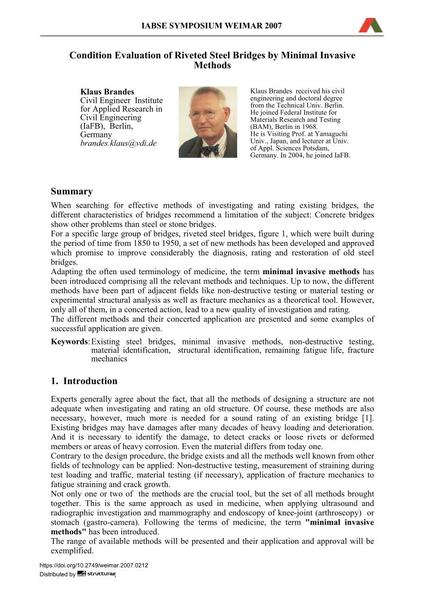Condition Evaluation of Riveted Steel Bridges by Minimal Invasive Methods

|
|
|||||||||||
Détails bibliographiques
| Auteur(s): |
Klaus Brandes
|
||||
|---|---|---|---|---|---|
| Médium: | papier de conférence | ||||
| Langue(s): | anglais | ||||
| Conférence: | IABSE Symposium: Improving Infrastructure Worldwide, Weimar, Germany, 19-21 September 2007 | ||||
| Publié dans: | IABSE Symposium Weimar 2007 | ||||
|
|||||
| Page(s): | 450-451 | ||||
| Nombre total de pages (du PDF): | 8 | ||||
| Année: | 2007 | ||||
| DOI: | 10.2749/weimar.2007.0212 | ||||
| Abstrait: |
When searching for effective methods of investigating and rating existing bridges, the different characteristics of bridges recommend a limitation of the subject: Concrete bridges show other problems than steel or stone bridges. For a specific large group of bridges, riveted steel bridges, figure 1, which were built during the period of time from 1850 to 1950, a set of new methods has been developed and approved which promise to improve considerably the diagnosis, rating and restoration of old steel bridges. Adapting the often used terminology of medicine, the termminimal invasive methodshas been introduced comprising all the relevant methods and techniques. Up to now, the different methods have been part of adjacent fields like non-destructive testing or material testing or experimental structural analysis as well as fracture mechanics as a theoretical tool. However, only all of them, in a concerted action, lead to a new quality of investigation and rating. The different methods and their concerted application are presented and some examples of successful application are given. |
||||
| Mots-clé: |
méthodes minimalement invasives
|
||||
